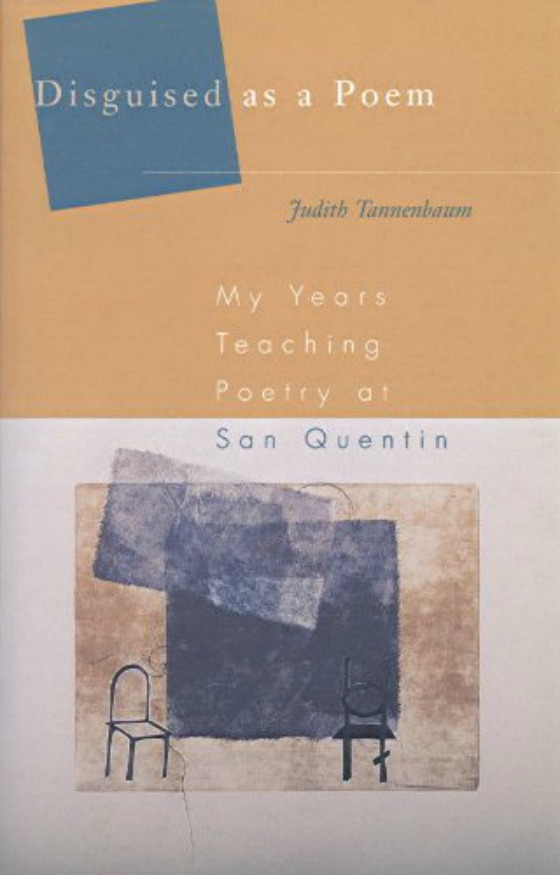On Thursday night, graduate and undergraduate students braved the subzero temperatures to attend poet Judith Tannenbaum’s riveting discussion about her experience teaching poetry at the California then-maximum security men’s prison San Quentin and the work that grew from that experience.
Tannenbaum’s visit was an installment of the Words Without Walls Reading Series. Words Without Walls is a program through which students pursuing an MFA in Creative Writing at Chatham teach creative writing courses at the Allegheny County Jail, State Correctional Institution Pittsburgh, and the residential drug and alcohol treatment facility for mothers and children Sojourner House.
At the age of 38, Tannenbaum began teaching at San Quentin in 1985. During her four years teaching there, she worked with a core group of the same men, which she cited as an, “unusual teaching experience.” After her first year of teaching one night a week, Tannenbaum received a grant which let her teach almost full time and offer more classes to a wider range of students under different levels of security. Tannenbaum worked with Arts in Corrections, a California program that organizes arts courses in correctional facilities.
Through this experience, she was able to not only work with inmates, but also with prison administrators, staff, and guards.
“I’m always someone who has been interested in point of view,” Tannenbaum said.
Growing up with a large and verbal extended family, Tannenbaum began listening to how individuals’ voices differed from one another at an early age.
“There was no world that I’ve been a part of that was as rich [in points of view] as the world of San Quentin,” she said.
For example, the story of an altercation in the prison yard could be told by an administrator, a prisoner, and a guard; and while the three stories would share some basic facts, they would be entirely different accounts.
Tannenbaum also noted the “tone of paradox” that San Quentin exuded. Paradoxes she cited included that her courses provided artistic opportunity in a constricted environment; many of her students had been convicted of murder but she knew them as “kind, smart, funny, and generous;” and physically, the prison contained chapels on one side of its yard and death row on the other.
Tannenbaum explored this paradox in her writing. She wrote a series of poems, some of which were written from her own perspective; however a majority were written from the imaged perspectives of other people living or working in San Quentin.
Many of her students took exception to her use of imagined point of view. They tended to feel that in order to get something right, one must experience it first hand.
At the end of her time at San Quentin, as the maximum security prison transitioned into a medium security one and her students were being transferred to new locations, one of Tannenbaum’s students—a man named Elmo—gave her an assignment: write about your experience at San Quentin from your own point of view.
From this assignment—and the help of her rich writer’s notebook—came her book, “Disguised As A Poem: My Years Teaching Poetry at San Quentin.”
Elmo agreed to serve as the book’s editor, and Tannenbaum cites his help as being paramount in making sure she, “got prison right.” If ever he felt she had not, “gone deep enough,” in her exploration of one of its aspects, he would tell her to revisit it. Elmo also offered the title of one of his own poems, “Disguised As A Poem.”
In the few years before the book came out, Tannenbaum participated in the Prison Creative Arts Project, in which a group of prison teachers from across the nation would meet and discuss their experiences. Being a part of this group provided Tannenbaum with a network of colleagues. When “Disguised” came out, she visited these colleagues and the prisons in which they worked as a supplement to her book tour.
On the tour, Tannenbaum cited the most difficult question she was asked as, “How did your students change?” Although she understood the reasoning behind the question, she, “didn’t like it.” To answer, she would explain that in prison, a person is reduced to their crime; however through art, people can express more about themselves and expand this narrow definition. The person does not change; art allows them to be, “more of what [they] all were.”
On her book tour, Tannenbaum developed close relationships with many of her students through letter writing. She even went on to co-author a memoir with one student, Spoon Jackson, which is titled, “By Heart: Poetry, Prison, and Two Lives.” Tannenbaum played a clip of a film in which Jackson read an excerpt of “By Heart.”
Tannenbaum provided the audience with two pieces of advice for those who teach in prisons.
The first, from a boss of hers, is, “To survive and do a good job working in a prison, you have to stay focused on what you’re going to do and know simultaneously that you’re never going to get it done in the way you think.”
The second, which comes primarily from students, is, “Be yourself. Be who you are. We contain multitudes, but be honest and be real.”


